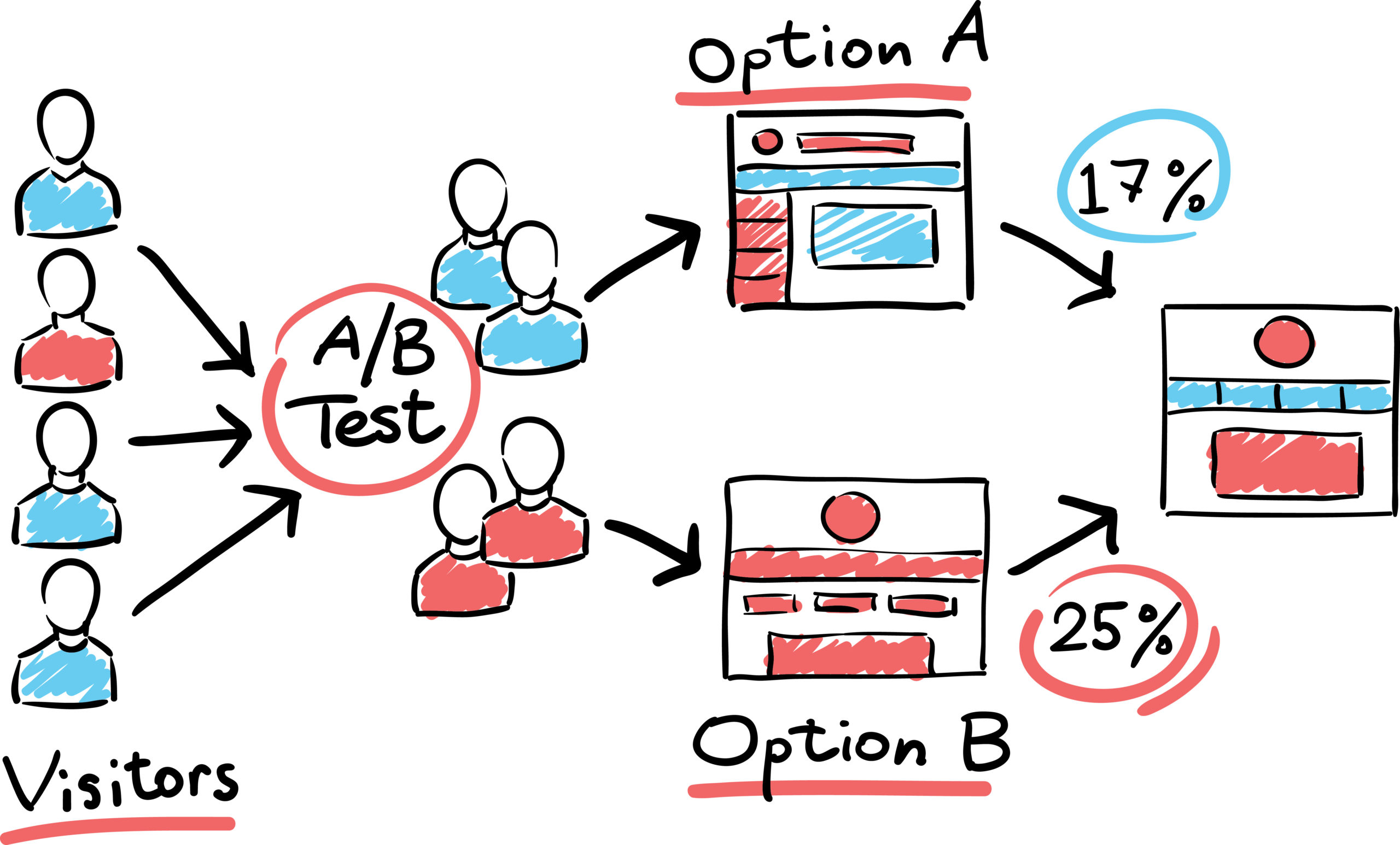
Why Legal Marketers Should A/B Test Their LinkedIn Ads

Related: Law Firm Guide to LinkedIn Advertising
Refresher: What is A/B Testing?
This method of testing, also called split testing, can be applied across many marketing channels. It involves comparing two versions of something like a web page, ad campaign, or email to determine which one produces the highest rate of success. From there, you can make decisions to optimize future efforts and continue to improve things like open rate and click-through rate. Realistically, A/B testing can be applied to almost any marketing activity to help with specific goals and metrics.
Reasons to A/B Test LinkedIn Ad Campaigns
If you advertise on LinkedIn, then you have the ability to test different variables of campaigns. Things like ad format, creative content, audience and ad placement can all be adjusted as part of an A/B test.
A/B testing is important for any firm who wants to make more data-driven marketing decisions. With A/B testing, you can make decisions that are based on actual user behavior instead of gut feeling. In this way, marketers can identify areas that need improvement and sources for optimization to make the biggest impact.
This is very valuable because we know that all decisions involve some degree of uncertainty. In some cases the right decision is obvious, but most times it’s harder to predict what the user experience will be and how people will react. With split testing, marketers can run a simple, easy, and cheap A/B test to view real user behavior and quantify what will be most successful. Companies who tend to use A/B testing in their process tend to:
- Experience greater innovation because there is less fear of negative outcomes
- Enjoy a higher ROI since negative ideas are executed less often and positive ideas are used more
- Leverage better collaboration since discussions on how to move forward can be based on real data rather than opinions
- Employ more focused creativity since teams can rely on client research and ideation instead of justifying ideas
Furthermore, A/B testing can help with specific functions of your LinkedIn campaign, such as:
- Uncovering insights that enable better decisions and client experiences
- Improving user engagement across ads, website performance, and overall LinkedIn experience
- Finding areas of improvement that will make the greatest impact on your bottom line
- Testing out theories or ideas quickly and cost-effectively
- Generating a stronger ROI by understanding what resonates the most with your audience
- Reducing the risk of spending time on ideas that won’t generate awareness or engagement
A/B Testing on LinkedIn
Hopefully you already used A/B testing as part of your marketing efforts, but if you didn’t, now you can see the value. Follow these steps to create tests for your LinkedIn advertising (and actually, you can use these steps on other platforms as well for the same effect).
- Choose an opportunity area – Start by considering the KPI you want to improve. To do this you’ll need to conduct a review of your performance and think about which things might make an impact.
- Establish a hypothesis – Just like with a science experiment, you need to start with a theory so that you can define what variables need to be changed. Consider statements like “We believe X because Y” and go from there.
- Design your experiment – You’ll need to establish the scope of the test so that you can determine what resources you’ll need to measure it. This might include writing new copy, designing new visuals, or pulling new audience lists. Start putting together the elements that will be required for your test.
- Execute your test – Once you design the ad materials (and complete QA) you can launch your experiment. 50% of the traffic should go to the original version, and 50% to the new variant. Make sure to aim for 95% statistical accuracy. It’s a good idea to make sure all of your tracking tools are set up properly and that you have a method for becoming aware of any bugs or issues that may occur following executing on the test.
- Analyze the results – Exactly how you analyze the data will depend on what your test was, but ideally you knew in advance which KPI you would be looking at and how to find it. With LinkedIn, you can use the A/B testing tools to compare the performance of two variants. The platform will tell you which option was the winner.
Takeaway:
For marketers who want to optimize their efforts and improve campaign performance, A/B testing can be invaluable. Use LinkedIn’s A/B testing functionality to get data-driven insights into client’s behavior and preferences. Over time, implementing what you learn from A/B testing can take your marketing to the next level and ensure a stronger ROI. Need more advice on all things LinkedIn? Check out our webinar, the Law Firm Guide to LinkedIn Marketing.
Are you ready to get started generating new, qualified leads?
Contact us to get started and let us help you energize your digital marketing and business development efforts.
Contact Us
